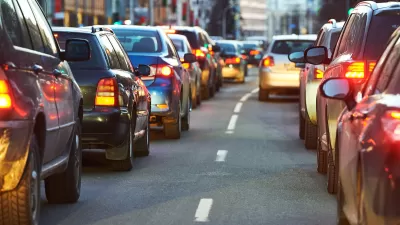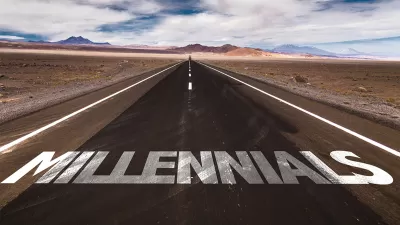Pasadena recently elected its first new mayor in 16 years, and the city is completing a 20-year General Plan Update that aims to continue animating downtown Pasadena by addressing growth and mobility simultaneously.
Vince Bertoni, director of Pasadena’s Department of Planning & Community Development, told The Planning Report how the city has successfully encouraged development that looks “through the lens of good long-range planning.”
He says that by stressing common long-term interests and improving the mechanics of development, Pasadena has attained a balance between neighborhood protection and economic growth.
"Both developers and the community have an interest in things being more streamlined," he notes. "If you’re a community member, you’re a volunteer. Do you want to spend six months dealing with a project that you may have concerns with, or 10 years?"
Pasadena's mobility and development strategy—including its transition to the Vehicle Miles Traveled metric—allows the city to take advantage of a Metro rail extension and the Regional Connector, both in progress. It also leaves room for growth and development without alienating residents interested in preserving Pasadena’s character.
Bertoni believes other municipalities could replicate Pasadena’s success. But if Pasadena seems to be breezing by conflicts that mire projects elsewhere for years, it may be because the benefits of past successes are clear:
"In Pasadena, you can see the future—because you can see train stations as well as bicycle and pedestrian improvements [being built]. It’s evident here that such changes are realistic and that if we do measure traffic impacts differently, we are going to get better outcomes."
FULL STORY: Pasadena General Plan Update Focuses Future Growth into Downtown & Around Mobility

Maui's Vacation Rental Debate Turns Ugly
Verbal attacks, misinformation campaigns and fistfights plague a high-stakes debate to convert thousands of vacation rentals into long-term housing.

Planetizen Federal Action Tracker
A weekly monitor of how Trump’s orders and actions are impacting planners and planning in America.

In Urban Planning, AI Prompting Could be the New Design Thinking
Creativity has long been key to great urban design. What if we see AI as our new creative partner?

King County Supportive Housing Program Offers Hope for Unhoused Residents
The county is taking a ‘Housing First’ approach that prioritizes getting people into housing, then offering wraparound supportive services.

Researchers Use AI to Get Clearer Picture of US Housing
Analysts are using artificial intelligence to supercharge their research by allowing them to comb through data faster. Though these AI tools can be error prone, they save time and housing researchers are optimistic about the future.

Making Shared Micromobility More Inclusive
Cities and shared mobility system operators can do more to include people with disabilities in planning and operations, per a new report.
Urban Design for Planners 1: Software Tools
This six-course series explores essential urban design concepts using open source software and equips planners with the tools they need to participate fully in the urban design process.
Planning for Universal Design
Learn the tools for implementing Universal Design in planning regulations.
planning NEXT
Appalachian Highlands Housing Partners
Mpact (founded as Rail~Volution)
City of Camden Redevelopment Agency
City of Astoria
City of Portland
City of Laramie




























